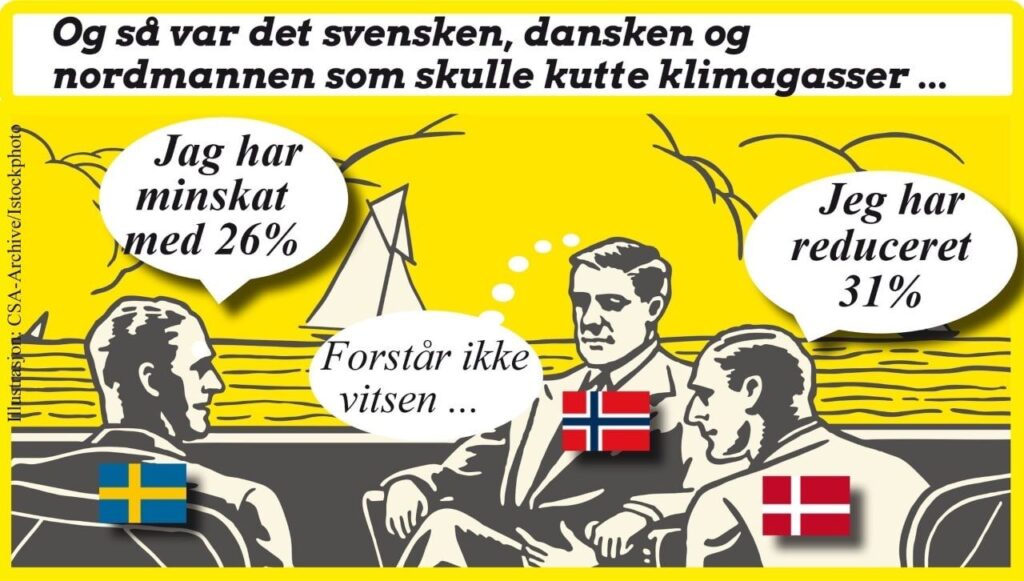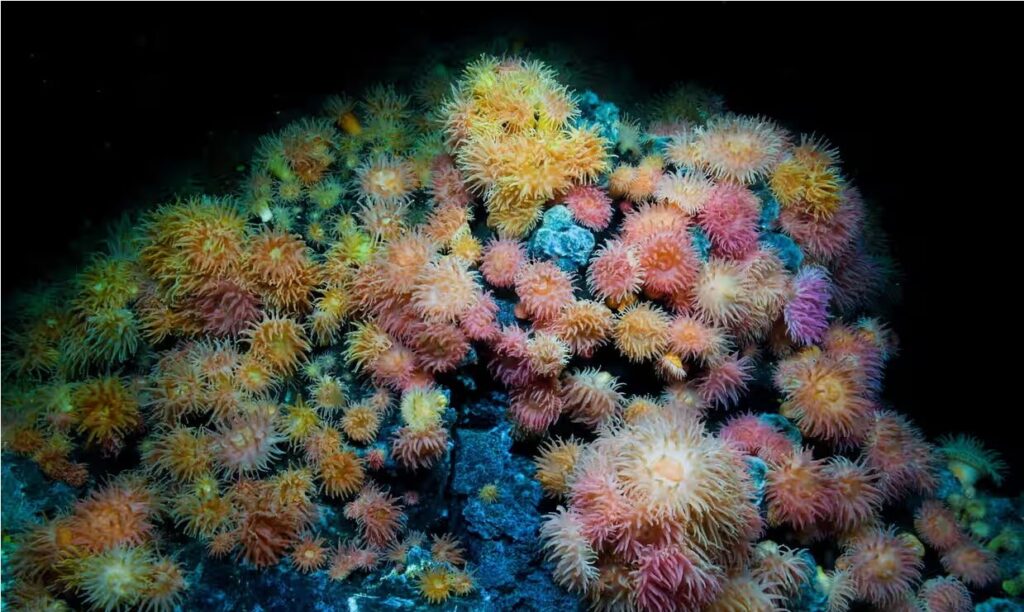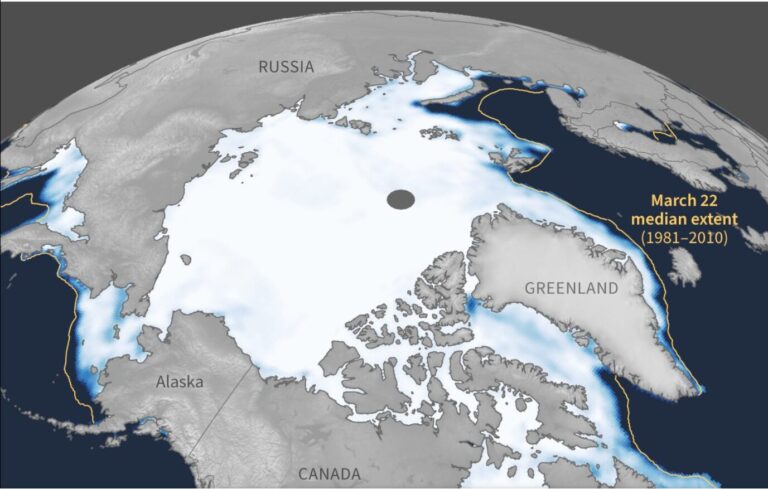Opening the seabed to mining is putting the nail in the coffin for Norway as a responsible ocean nation. – Fredrik Myhre, head of oceans for WWF Norway

Norway and South Africa will lead the emission-cut negotiations during the COP29 climate summit.
The Azerbaijani presidency has asked Climate and Environment Minister Tore O. Sandvik and South Africa’s Environment Minister Dion George to lead the negotiations on emission reductions.
Global greenhouse gas emissions continue to increase. They are not increasing as quickly as before, and emissions are falling in several countries and regions. But if we continue as we are now, we are steering the world towards a warming that will have catastrophic consequences for everyone.
In 2025, all countries must submit new climate targets to the UN.
New funding target
Cutting emissions in line with the targets and adapting the world to climate change, which is happening anyway, requires money. Investments must go to climate solutions to a far greater extent than today. Developing countries must also receive support for their climate work.
A primary task at the climate summit in Baku will be to land a new global financing target that can trigger the investments the world needs to reach the climate goals.
Climate and Environment Minister Tore O. Sandvik leads the Norwegian delegation to COP29. Foreign Minister Espen Barth Eide and Development Minister Anne Beathe Tvinnereim will also represent the government.
COP29: Norway’s paradoxical stance on climate commitment – PM Jonas Gahr Støre will not attend COP29.
When the state budget proposal was presented, it was confirmed that the government is not on track to achieve its goal of cutting emissions by 2030. The government is opening the door for the purchase of emission allowances to achieve the climate goal that Norway has submitted to the UN.

Facts about the Deep-Sea
- 50% of Earth is deep sea – average depth 4000m
- Least explored realm on Earth
- 60 000km long ocean ridge is one striking feature
- 90% of Earth’s volcanic activity occurs on deep-sea floor
- 80% of Earth’s biodiversity found in deep sea – likely millions of species
- Mineral resources of deep-sea sediments are unknown but potentially significant
- Ocean waters are recirculated through the seafloor approximately every million years
- Hydrothermal sea-floor circulation
- alters the volcanic crust
- forms massive mineral deposits
- influences the chemical composition of the oceans
- accounts for 20% of Earth’s heat loss
Norway’s decision to proceed with opening vast ocean areas for destructive mining represents an unprecedented governance scandal. Never before have we seen a Norwegian government so blatantly disregard scientific advice and overlook the warnings from a united ocean research community.
– Karoline Andaur, CEO of WWF-Norway
WWF: Norway is one of the first countries globally to open areas for deep seabed mining despite warnings from its environmental agency, national and international research communities, and criticism from the EU and worldwide.
No legal basis for opening
WWF-Norway believes that the strategic impact assessment by the Ministry of Energy, upon which the Government’s opening decision is based, does not meet the minimum requirements outlined in the Subsea Minerals Act § 2-2. Therefore, there is no legal basis for the opening decision. The Norwegian Environment Agency also noted the same in its public consultation response to the strategic impact assessment.
Furthermore, WWF-Norway believes the strategic impact assessment shows that the government does not have adequate knowledge about deep-sea nature to assess the consequences of exploration and exploitation, neither on the environment, other industries, nor the Norwegian economy. The significant and numerous knowledge gaps fail to meet the legal minimum standards for a strategic impact assessment, forming the basis of WWF-Norway’s lawsuit.
“If this decision is not contested, we accept that politicians can blindly break the law and manage our resources. This would establish a new and dangerous precedent for how current and future governments conduct impact assessments,” says Andaur.
Major international opposition
To date, 25 countries, including France, the UK, Mexico, and Denmark, have called for a precautionary pause, moratorium, or ban on deep seabed mining. The European Parliament and over 30 industry entities, such as Google, BMW, KLP, and Storebrand, are calling for a moratorium, in addition to over 800 marine scientists from 44 different countries.
The European Commission advocates for a ban on deep seabed mining until gaps in scientific knowledge are properly filled and it can be demonstrated that this activity has no harmful effects on the marine environment. Meanwhile, due to climate and nature impacts, the European Investment Bank has excluded seabed minerals from its investment portfolio. Recently, an overwhelming majority in the European Parliament voted in favor of a resolution criticizing Norway’s plan for deep seabed mining.

Happy #WorldOctopusDay! 🐙
— Environmental Justice Foundation (@ejfoundation) October 8, 2024
Many of these incredible animals live in the deep sea. The Dumbo octopus, for example, lives at depths of up to 7,000 metres.
They are also extremely sensitive to changes in their habitat – changes that could be caused by #DeepSeaMining.
🎥: @NOAA pic.twitter.com/fIQbiuSPPy
Deep sea mining – Wikipedia
Deep-sea mining is the extraction of minerals from the seabed of the deep-sea. The main ores of commercial interest are polymetallic nodules found at depths of 4–6 km (2.5–3.7 mi), primarily on the abyssal plain. The Clarion-Clipperton Zone (CCZ) alone contains over 21 billion metric tons of these nodules, with minerals such as copper, nickel, and cobalt comprising 2.5% of their weight. The global ocean floor is estimated to hold more than 120 million tons of cobalt, five times the amount found in terrestrial reserves.[2]
As of July 2024, only exploratory licenses have been issued, and no commercial-scale deep-sea mining operations have been conducted yet. The International Seabed Authority (ISA) regulates all mineral-related activities in international waters and has granted 31 exploration licenses so far: 19 for polymetallic nodules, mostly in the CCZ; 7 for polymetallic sulfides in mid-ocean ridges; and 5 for cobalt-rich crusts in the Western Pacific Ocean.[3] There is a push for deep sea mining to commence by 2025 when regulations by the ISA are expected to be completed.[4][5]
Deep sea mining is also possible in the exclusive economic zone (EEZ) of countries, such as Norway, where it has been approved.[6] In 2022, the Cook Islands Seabed Minerals Authority (SBMA) granted three exploration licenses for cobalt-rich polymetallic nodules within their EEZ.[7] Despite three independent reviews highlighting significant gaps and flaws in the environmental impact statement, Papua New Guinea was the first country to approve a deep sea mining permit for the Solwara 1 project.[8]
Deep-sea mining causes huge decreases in sealife across …
The Looming Environmental Apocalypse: Deep Sea Mining
Nature: Evidence of dark oxygen production at the abyssal seafloor
Essentially, the metal nodules produce electricity like a battery and with that energy they can split a water molecule, H2O, into its component parts, hydrogen and oxygen, thus producing oxygen in the dark ocean floor.
‘…marine biologist examinations of deep sea areas mined during the 1980s revealed total dead zones that lacked even the presence of bacteria.’ https://popsci.com/science/dark-oxygen-ocean/… 16 mining corporations have permits to strip the ocean floor.




1 Comment
Pingback: Deep-Sea Mining’s Hidden Risk: Debris Threatens the Overlooked Midwater Ecosystem - Bergensia